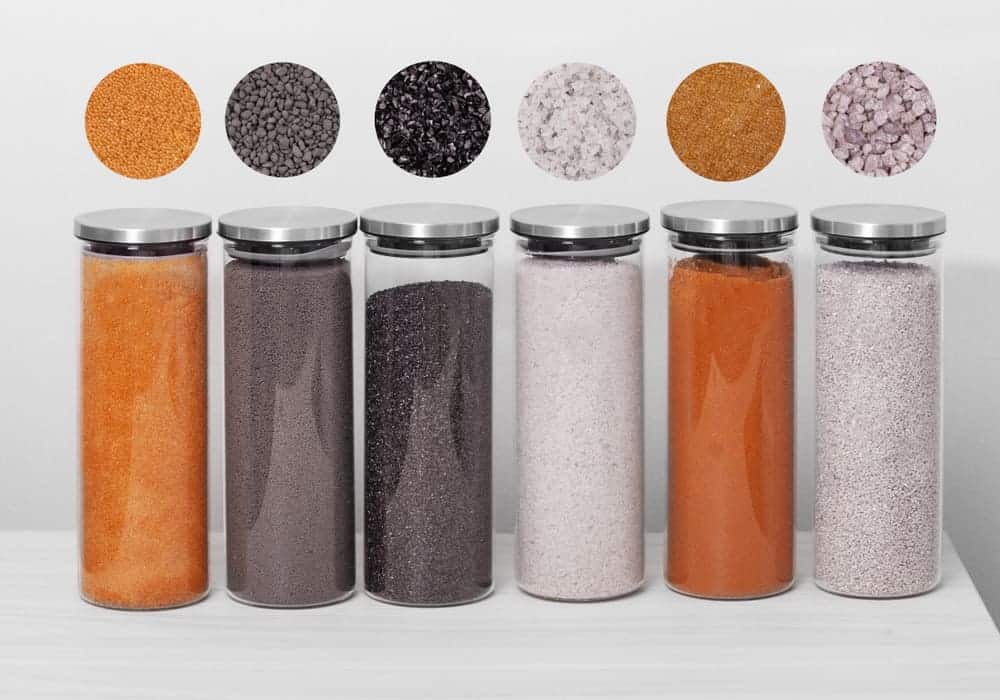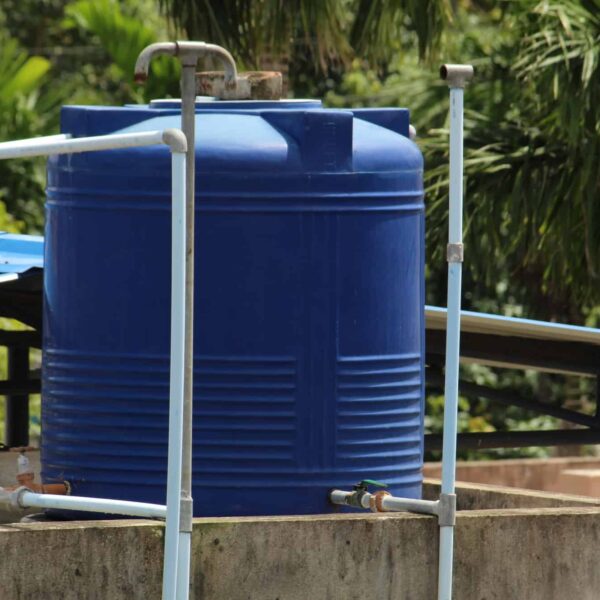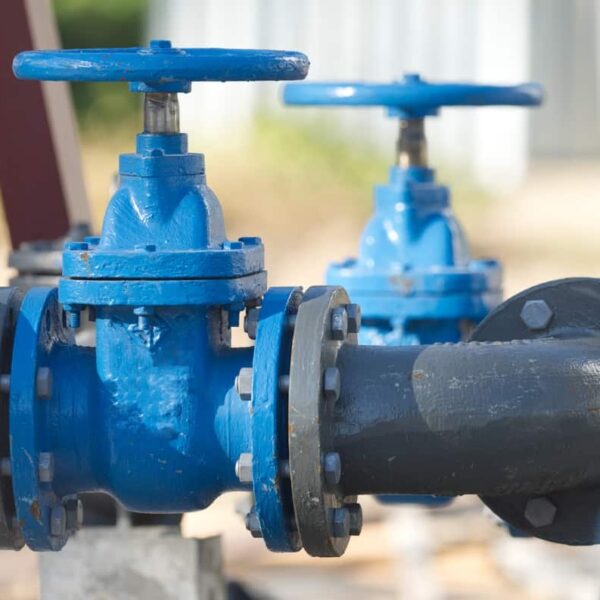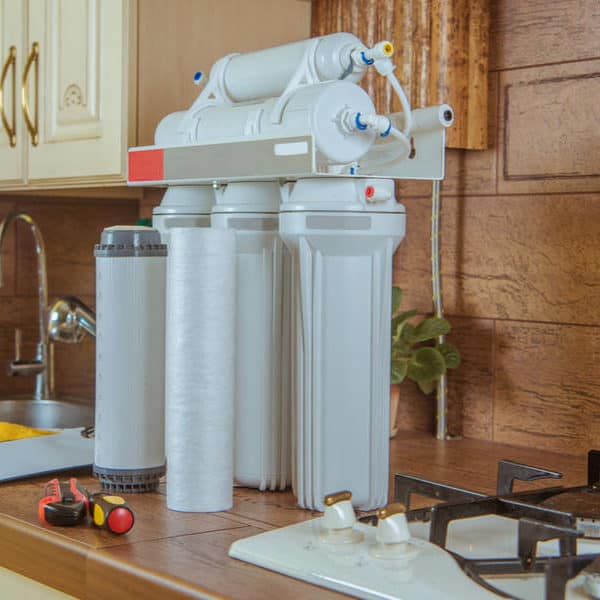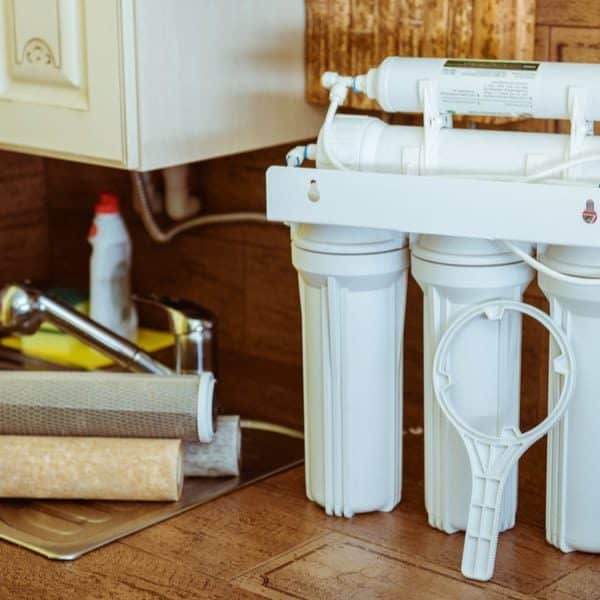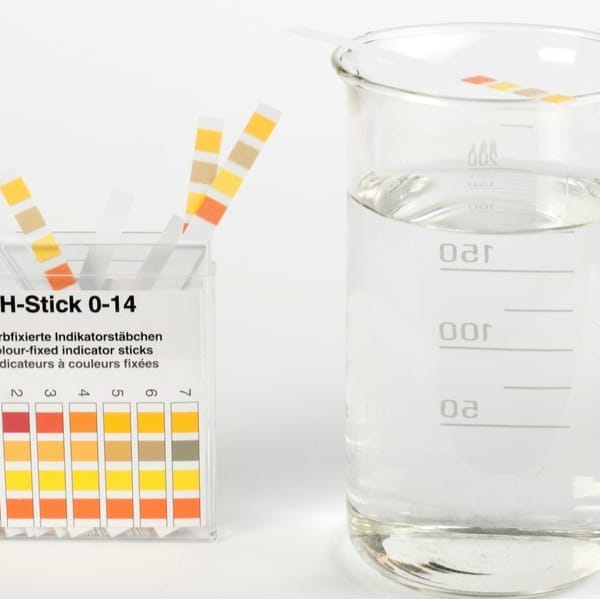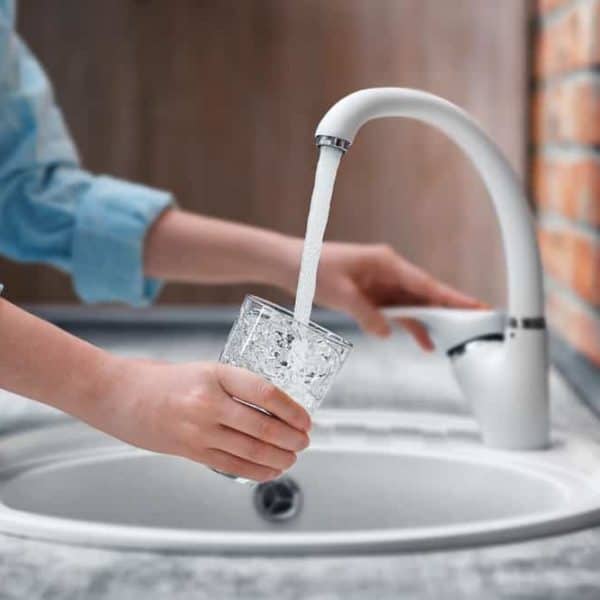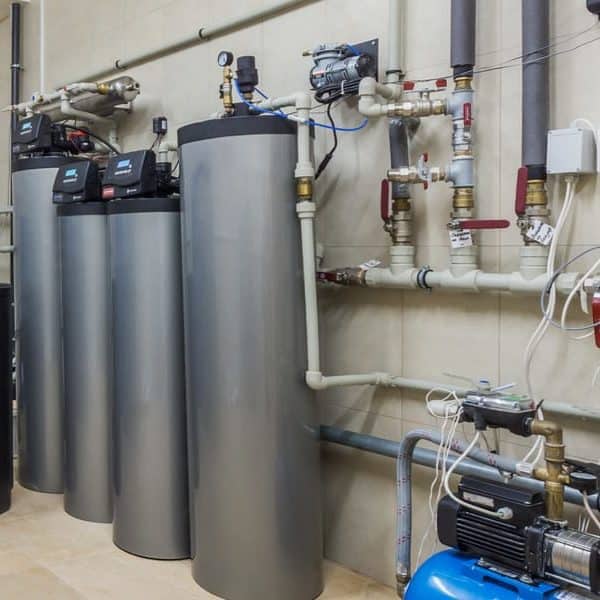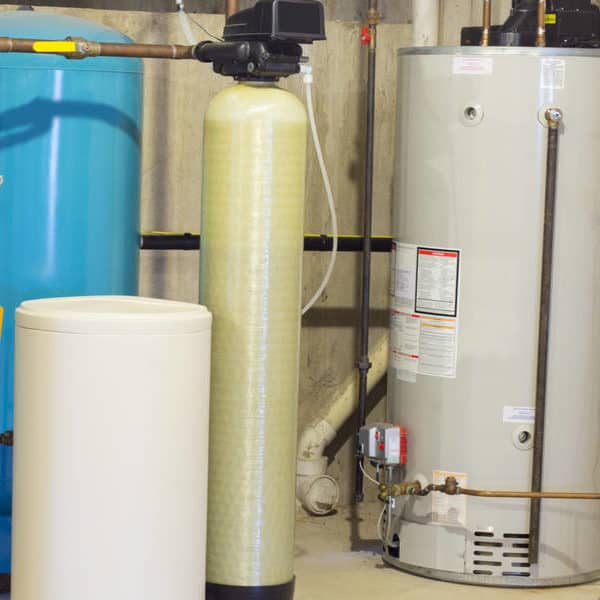If you are one of many people purchasing a water filtration system, you have heard of the term ‘filter media.’ It is a powdery substance, which you need to add to your filtration system to make the most out of your water filter.
You can find various types of filter media on the market, offering different levels of filtration. Therefore, you should look for an appropriate filter and proper filtration media personalized to the impurities specific for your water source.
The Most Popular Water Filtration Media
Before you pick out an ideal filtration media for your system, you should know that the type of impurities you can remove from the system depends just on the media you use.
Some of them keep you safe from toxins. The other ones can just keep your water clean from impurities. Which one you need depends on the quality of water in your region. Let’s see.
The type of water filter media |
|||||
|
Media |
Density | Bed depth | Service flow | Organic removal flow | Backwash flow |
| Granular activated carbon | 25 lb/ft³ | 24 to 36 inches
(61 – 91.5 cm) |
3 to 5 gpm/ft² | 1 to 3 gpm/ft² |
8 to 10 gpm/ft² |
|
Activated alumina |
43 lb/ft³ | 36 inches
(91.5 cm) |
1 to 2 gpm/ft² | / | 8 to 10 gpm/ft² |
| Pyrolox | 125 lb/ft³ | 24+ inches
(61+ cm) |
5 gpm/ft² | / |
25 to 30 gpm/ft² |
|
Anthracite |
50 lb/ft³ | 24 to 36 inches
(61 – 91.5 cm) |
5 gpm/ft² | / | 12 to 18 gpm/ft² |
| KDF55 | 171 lb/ft³ | 10+ inches
(25.5+ cm) |
30 gpm/ft² | / |
30 gpm/ft² |
|
KDF85 |
171 lb/ft³ | 10+ inches
(25.5+ cm) |
15 gpm/ft² | / | 30 gpm/ft² |
| Sand | 100 lb/ft³ | 18 to 30 inches
(46 – 76 cm) |
3 to 5 gpm/ft² | / |
15 to 50 gpm/ft² |
|
Multi-layer (multi-media) |
92 lb/ft³ | 36 inches
(91.5 cm) |
10 gpm/ft² | / |
15 gpm/ft² |
1. Activated carbon
It is the most popular media for most users of purification filters, especially those who have a whole house water filter. Most water bottle filters and water filter pitchers also use activated carbon for filtration.
Even though activated carbon can be made from coal, wood, and animal bones, the great thing is that we can get it from coconut shells, as well. That makes this type of media more environmental-friendly.
Thanks to its high surface area, this medium has a fantastic adsorptive capacity. However, keep in mind that you need to replace it as soon as it saturates with contaminants.
Benefits of using activated carbon for filtration
- It can bind and remove most organic contaminants, chlorine, copper, lead, and chlorination byproducts
- It keeps your water safe from many pesticides
- It can improve the taste and odor of tap water
- It is a widely available and entirely natural filter medium
- It is an affordable medium for most people
2. Catalytic carbon
Nowadays, you can also find catalytic carbon, an enhanced form of activated carbon. It is widely used for the disinfection of water and primarily removes chloramine from it.
Approximately 20% of regions in the US use chloramines for water disinfection, especially in southern states. Even though it is more stable than chlorine, there is one huge disadvantage of its usage. It is incredibly hard to take it out of the water.
The importance of catalytic carbon is in the fact that this excellent filtration media can remove the majority of this particular chemical from drinking water.
Benefits of using catalytic carbon for filtration
- It is more effective than active carbon
- Its activity promotes a faster chemical reaction, which means you need smaller equipment and less carbon for filtration
- Its on-site regeneration reduces operating costs
- It is possible recycling and reusing it
3. Kinetic degradation fluxion (KDF Media)
It contains copper and zinc particles in 50:50 (KDF55) or 85:15 (KDF85) ratios. Even though it is not as efficient at removing chlorine as carbon, many people choose it because of its price, longevity, and best stability on the high temperatures.
Benefits of using KDF for filtration
- It reduces the level of water-soluble heavy metals, chlorine, and hydrogen sulfide
- It inhibits the growth of algae and eliminates most bacteria from drinking water
- You can use it in multi-media filter systems
4. Reverse osmosis membrane
Since the reverse osmosis system removes a high percentage of impurities and dangerous chemicals from drinking water, it is a highly popular filtration system nowadays.
Thanks to a semi-permeable membrane, this system pushes water molecules through while trapping toxins and pathogens at the same time. Since the RO membrane is sensitive to chlorine, it can’t function on its own but need to be a part of a multiple-stage system.
Benefits of using reverse osmosis membrane for filtration
- It is excellent when you need to filter asbestos, hexavalent chromium, heavy metals, viruses, and bacteria
- Since it has a long service life, you don’t need to change it more than once in two years
5. UV filtration (ultra-violet light)
The system, you can install at any level of water treatment, works by pumping water into a chamber with an ultraviolet bulb. The frequency of rays prevents microbes from reproducing and destroys their DNA and cell walls. Plus, it eliminates harsh chemicals.
You can choose the UV filter for the treatment of many water sources, including private wells. The only thing you need to take care of is to change a light bulb after approximately 10,000 hours of operation.
Benefits of using UV light for filtration
- It is an efficient and entirely safe method for sanitizing the water
- It doesn’t contain chemicals substances, which can alter the taste of water
- Viruses, bacteria, parasites, and cysts can’t become resistant to UV lights
- You can combine it with other filters
6. Activated alumina (resin)
Basically, it is a mixture of gamma and amorphous aluminum oxide. Thanks to the high surface area, it is highly efficient in removing fluoride, humic acid, arsenic, silica, and selenium. Some types may filter out harmful barium and radium. Also, you can use it to remove calcium and magnesium from hard water.
Applying this type of filter is common in regions with artificial fluoridation. For decades, scientists have believed that adding fluoride to water may prevent tooth decay, but it seems that its harmful effects on human health don’t justify its using. Therefore, you should use an AA filter to remove fluoride from your drinking water and prevent additional damage.
Benefits of using activated aluminum for filtration
- Except it removes arsenic and selenium, activated alumina is the most efficient media for removing fluoride
- It won’t change the taste of water
- There will be no leaching into the water
7. Pyrolox (manganese dioxide)
There are a few media on the market containing manganese dioxide. As an efficient catalyst against oxidation, this mined ore is the best possible choice for removing iron, which is a secondary water contaminant. Take care that inadequate maintenance and low dissolubility of oxygen may cause filter failure.
Benefits of using pyrolox for filtration
- It reduces the level of hydrogen sulfide, iron, and manganese in the water
8. Ceramic
It is often a part of the pressure-based and gravity water filters. It is an excellent choice to remove biological agents, heavy metals, and fluoride.
Benefits of using ceramic for filtration
- It will remove viruses, bacteria, protozoa, and most cysts
- It is a media capable of lowering turbidity of the water
- As an entirely natural type of filtration, and it doesn’t use any chemicals
Sand and gravel
Both gravel and sand are excellent media for seawater filtration, but you can use it to purify other types of water, as well.
9. Sand
Sand, containing a high level of silica and a quite low level of calcium, is the oldest filter medium people have been using for centuries. Nowadays, it is primarily used in municipal water treatment. You can use it as an independent filter medium or as a part of a multi-layer filter.
Benefits of using sand for filtration
- It is sized to every existing international standard
- It is a natural medium and entirely sanitized material
10. Gravel
If you use a whole house water filter, with activated carbon or multi-media, and want to provide a high flow in every part of your home, gravel is an excellent solution for you.
High-quality gravel of high purity is a reliable medium for filtration in households. You can also use it as a support to improve the performance of other types of media.
Benefits of using gravel for filtration
- It is the best option for removing clay and shale from water.
11. Multi-layer (multi-media)
After finding a way to evolve carbon and redox media, experts have developed multi-layer as the latest technology for water filtration. It is a blend of three to five media, such as anthracite, activated carbon, ion exchange resin, KDF media, garnet, and sand.
Since all of them are placed in a single cartridge, this type of filter takes up less space. The densest medium is at the bottom of the tank, and the least dense one is always on the top. That way, a filter can provide an excellent flow rate.
Benefits of using multi-media for filtration
- It doesn’t take up much space
- It has an excellent flow rate
- You can solve multiple issues with contamination at once by using this media
- It inhibits the growth of bacteria and removes heavy metals and chlorine from the water
